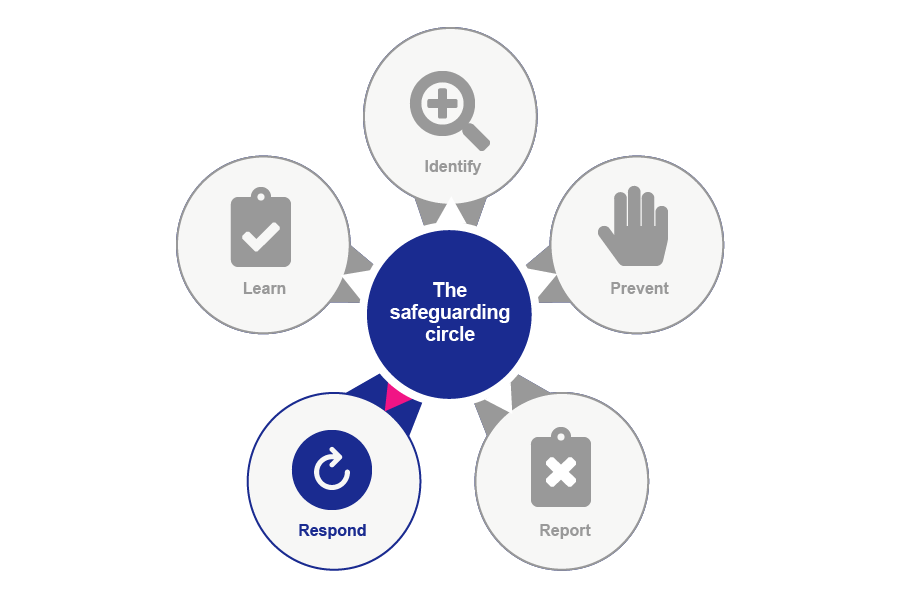Unit 5: Response
The responding stage of the Safeguarding Cycle
Welcome to Unit 5 of this course. We return to the Safeguarding Cycle and look at how to respond to safeguarding concerns that are raised or reported.

Once a report comes through, it’s important for organisations to know what to do next. These procedures should be documented clearly to prevent any further harm. In recent times, the media has highlighted how organisations have not responded appropriately when safeguarding concerns have been reported to them. Some organisations have focused on damage control and protecting their name and reputation rather than making decisions which are in the best interest of victims and survivors.
In this part of the course, we reflect on lessons learnt from some of the cases highlighted in the media. As a result of media exposure and public calls for greater accountability, institutional donors, research academies, financial institutions, the World Bank and the UN have taken a tougher stance to eradicate sexual misconduct in the international aid and development sector by including stringent compliance standards on the partners they fund so that the responsibility of safeguarding people is a priority throughout the delivery chain.
We look at the local legal context, managing disclosure, developing referral pathways and the importance of protecting whistleblowers.
